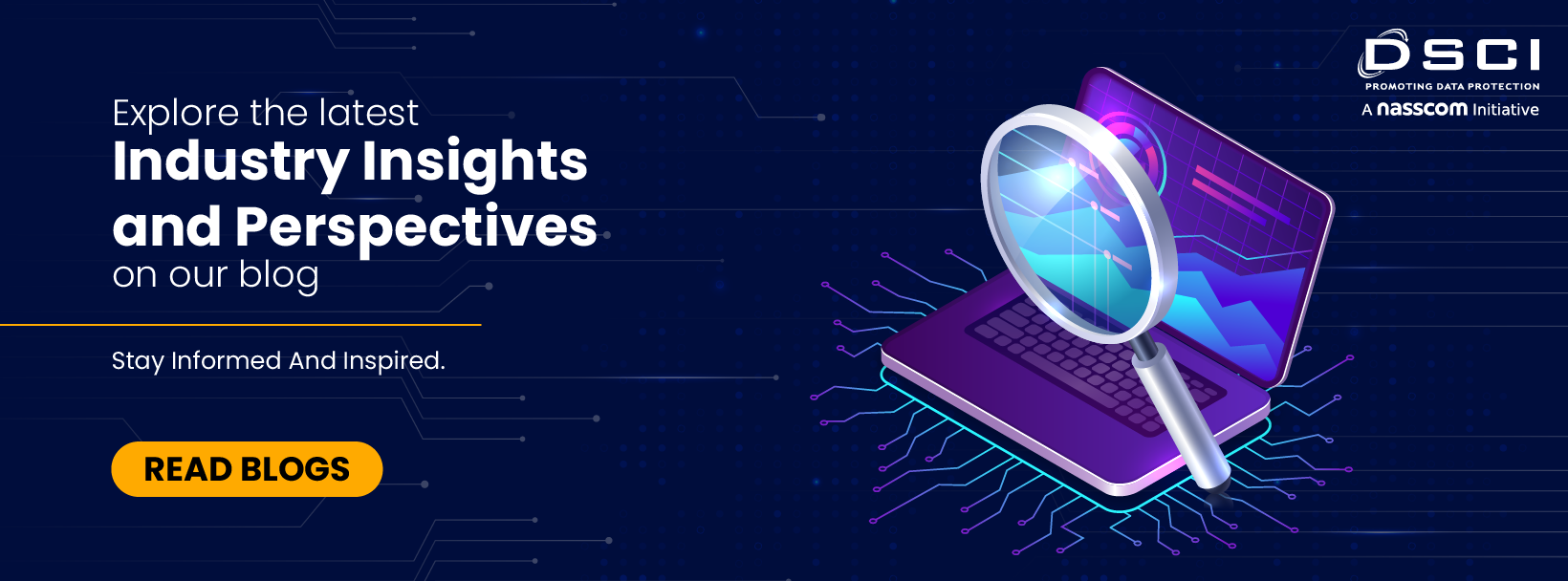
The first computer debuted in the late 19th century, following which constant inventions and innovations led us to Artificial Intelligence around 1950s. Ever since, AI experienced new leaps of constant transformation. The newest edition to the innovation bucket is the coming of
Generative AI.
In the past few years, words like ChatGPT, DALL-E, Midjourney, and Bard have entered the common parlance and have brought us face-to-face with the concept of Generative AI. But what exactly is Generative AI in this microcosm of Artificial Intelligence? What and how will it impact our lives? Where are we heading to? Moreover, how are we planning on balancing privacy and innovation in generative AI if it is slowly taking over our frequently visited spheres?
Understanding Generative AI
Let’s understand and define the word ‘Generative AI’.
According to Webster Dictionary, artificial intelligence that is capable of generating new content (such as images or text) in response to a submitted prompt (such as a query) by learning from a large reference database of examples. When we talk of Generative AI, it involves AI methods that learn from data that is fed on and utilize this knowledge to produce entirely novel and distinctive objects/ content resembling, yet distinct, from the original data.
It is that versatile branch of AI which is into active creation and steps up towards the creation of coherent text, music composition, graphic designing, human speech stimulation, crafting of 3D objects, and formulation of scientific hypotheses. Thus, Generative AI brings with it a huge scale of generation potential and bulk processing. It is this potential that has doubled the pace of AI adoption in the last five years, as per McKinsey’s study.
The study further substantiates the key areas where 75% value addition will come from Generative AI. This includes:
- Customer Operations
- Marketing and Sales
- Research & Development
- Software Engineering
Major search engines like Google have also incorporated the technique for refining its search results. Therefore, the bigger picture has already begun. All we have to do now is focus and understand if it is sustainable, and if not what needs to be done.
Impact on Innovation
When something new walks through the doors, it also brings along the apprehensions. Generative AI may now be welcomed but skepticism persists. Businesses have been fretting on the impact, wondering if it will bring an unwelcome change. Most likely, will it replace the brain, i.e., humans behind its creation?
However, with the arrival, a lot of streamlining is now visible across domains:
- Customer relations have better voice assistants and responses.
- Translation services have quickened, designing has eased.
- Content generation has become more focused.
The speed of innovation has therefore accelerated with added efficiency. This also provides room for further innovative growth. According to Gartner, around 56% IT organizations have already deployed GenAI across internal optimization and external use.
Although, anything new in the arena of technology also needs critical scrutiny. The attack surface increases due to Large Language Models, and large datasets containing personal information face the risk of unauthorized access and exposure.
Importance of Privacy Protection in the age of Generative AI
It is imperative to work towards privacy protection when Generative AI is becoming intrusive. Since these models are evolving, they are susceptible to manipulation. This calls for adoption with attention.
You need to direct your focus around the implementation of the following:
- Informed use of Generative AI for specific purpose
- Privacy or data protection impact assessments to gauge the impact on data protection compliance obligations
- Define and understand the reason behind using AI
- Draft a policy compliance framework for the organization
- Supervise AI exploration
- Incorporate human intervention to avoid AI biases
- Promote data integrity for enhanced security
- Implement governance and auditing mechanisms with continuous evaluation
- Ensure open communication among stakeholders
And a lot more is in for the developers to ensure judicious usage.
In that line of thought, working for and with Privacy Enhancing Technologies (PETs) is highly recommended to ensure a person’s privacy. PETs are critical of privacy breaches, hence are the reason to look out for them.
PETs are found central in ensuring the following:
- Secure Multi-Party Computation (MPC) where organizations working together can limit the information about them that can be learned.
- Differential privacy can be undertaken to guard data re-identification.
- On-device learning to protect your data from being shared over cloud or any remote server.
Thus, taking well calculated steps based on the considerations shared in the present age can help in balancing privacy and innovation in Generative AI.
Since, after the emergence of Generative AI, innovation has accelerated. A prime example of this can be seen in idea generation where multiple ideas can now be combined to deliver a stronger one. It adds more clarity to the raw ideas that we as humans conceive, and often contributes to divergent thinking. That is, ideas/ solutions that we might have failed to see or register as humans. It is agreed that the usage of GenAI comes with its risks but the level of innovation brought to society is undeniable. To better grip the democratizing innovation potential, it is therefore essential to navigate the levers of privacy well.
To further elaborate on the rapidly increasing adoption of generative AI technologies, a report by DSCI, ‘Mitigating Security & Privacy Risks: A Guide to Enterprise Use of Generative AI’ deep dives into the associated imperatives for enterprise and business users to identify, examine, and prepare mitigation plans for risks arising out of this technology.
Sources:
https://www.mckinsey.com/featured-insights/mckinsey-explainers/what-is-generative-ai
https://www.merriam-webster.com/dictionary/generative%20AI
https://hbr.org/2023/07/how-generative-ai-can-augment-human-creativity
